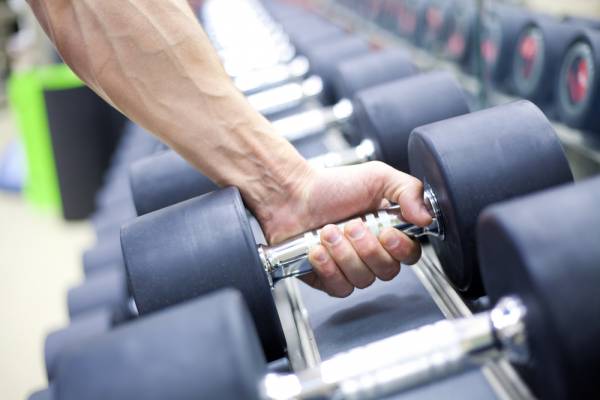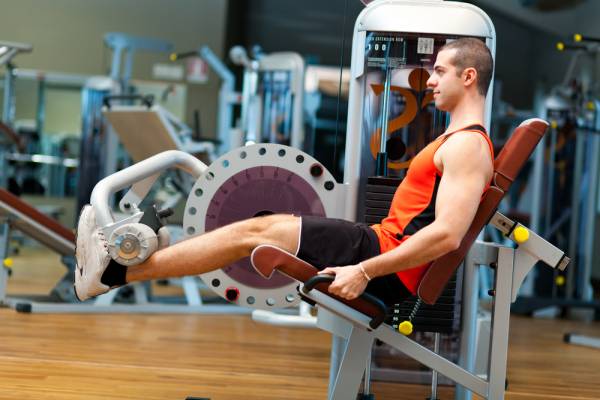So you nailed your diet. Atta boy. You can thank Eric for that – he’s given you all the tools to pack on lean mass with carb cycling. But now the problem is you need more than a sound eating plan to build a Herculean physique. You could nail your diet 100%, but if you your evenings involve nothing but Catching up with The Kardashians or posting selfies on Instagram, those extra calories and muscle-building protein will do nothing but make you one chunky S.O.B. You need the right training plan to blast your muscles into a muscle building frenzy.
Where to Start?
Flip through the pages of Muscle and Fiction, Beefy Biceps Weekly, or whatever other bodybuilding publication you fancy, and you’ll come across some hardcore workouts. Things like supersets, drop sets, forced reps, high volume, heavy weights, and specialization programs so complicated they make Einstein’s theory of relatively look like a kindergarten math test. Then you look at the guys promoting these workouts, and they’re massive – sheer behemoths, men of muscle and might. This is surely a testament to the effectiveness of these routines, so you’d be forgiven for thinking that’s what you’ll get here.
Not so fast, young grasshopper. Yes, the bodybuilders in the magazines do train like this. And yes, they do make the Incredible Hulk look like a pre-pubescent schoolgirl, but this isn’t how you’re going to train.
Professional bodybuilders have – how shall we say this – some assistance. Plus, they dedicate every minute of every day to training, eating, and sleeping. Something you don’t have the luxury of doing. Along with years of experience lifting heavy weights and stellar genetics, this makes them poles apart from you and I.
Does this mean the busy, dedicated muscle-seeking brethren can’t get jacked? Hell no, we’re just to go about it in a different, more effective way.
No B.S. Plan for Maximal Hypertrophy
You’re a natural lifter. Rather than pound each muscle into oblivion once per week with every intensity-boosting technique, rep range, machine, and tempo known to man, you’re going to adopt a high frequency approach. Hit every muscle group twice per week. Yes, even biceps. High frequency training provides additional training stimulus and increasing the rate of muscle protein synthesis.
Muscle Protein Synthesis and Training Frequency
To build muscle, you need to have a positive net protein balance. Net protein balance (NPB) equals muscle protein synthesis (MPS) minus muscle protein breakdown (MPB).
NPB = MPS – MPB
In other words, the higher MPS in relation to MPB, the better your gains. Increased training frequency is optimal because training a muscle increases muscle protein synthesis in that muscle, peaking around 24 hours post-session and returning to baseline roughly 36 hours after your workout.1
So, that means just crushing more volume each workout, right? Hold on just a second. Research has shown that increasing your volume per workout, using extra intensity techniques, or generally training past the point of muscle failure, doesn’t have any extra impact on MPS.2 Going past failure and only working muscles once a week in your typical bodybuilder split neglects a massive opportunity to spark more growth through optimal MPS.
The Solution: Train More Frequently
If you’re a beginner, then full-body workouts are the best way to train. But an intelligent, iron junkie like yourself is no longer a beginner, so you can’t train all the major movements at a high intensity in one session because, ironically, you’re too strong to maintain that long term. Plus, you’re so smoked from workouts filled with squats, deadlifts, chin ups, and bench presses that you neglect those mirror muscles. Yep, guys who spend all their time curling get a lot of grief, and in a battle of biceps curls versus squats it’s no-contest of what’s more effective for building maximum muscle, but neglecting those smaller muscles won’t give you the jaw dropping physique you’re seeking.

Enter the Upper-Lower Split
By using an upper-lower split, you get the massive benefits of increased MPS, along with adequate recovery between workout, and can give every muscle group the attention it deserves.
Day 1: Monday
1A. Bench Press or Incline Bench Press – 4-6 sets of 3-5 reps
Alternate between variations week to week and work up to one heavy set of three to five reps. So, week one would be bench presses and week two would be incline presses. Each time you train the exercise, aim to hit a new weight or reps personal record.
2A. Chin-ups (Neutral grip) – 4 sets of 6-8 reps
3A. Cable Rows – 4 sets of 6-8 reps
4A. Seated Dumbbell Press – 2 sets of 6-8 reps
5A. EZ Bar Curls – 3 sets of 8-10
5B. Dips – 3 sets of 8-10
Day 2: Tuesday
1A. Back Squats or Deadlifts (sumo or conventional) – 4-6 sets of 3-5 reps
2A. Stiff-Legged Deadlifts or Paused Squats (SLDLs if squats or front squats were your main exercise, paused squats if you deadlifted first) – 4 sets of 6-8 reps
3A. Barbell Lunges – 3 sets of 6-8 reps each leg
3B. Glute Ham Raise – 3 sets of 8-10 reps
4A. Standing Calf Raises – 5 sets of 8-10 reps
5A. Seated Calf Raises – 3 sets of 10-12 reps
Day 3: Thursday
1A. Flat Dumbbell Press or Incline Dumbbell Press – Alternate as per days one and two, but for 4 sets of 8-12 reps
2A. Dumbbell, Barbell or Chest-Supported Rows – 3 sets of 8-12 reps
3A. Wide Grip Pulldowns – 3 sets of 8-12 reps
4A. Dumbbell or Machine Flyes – 2 sets of 15-20 reps
5A. Cable or Dumbbell Lateral Raises – 2 sets of 15-20 reps
6A. Close Grip Bench Presses – 3 sets of 8-10 reps
7A. Straight Bar Curls – 3 sets of 8-10 reps
8A. Pushdowns – 2 sets of 15-20 reps
8B. Seated Dumbbell Curls – 2 sets of 15-20 reps
Day 4: Saturday
1A. Leg Press or Hack Squat – Alternate as per days one, two, and three, but for 4 sets of 8-12 reps
2A. Lying, Seated or Standing Leg Curls – 3 sets of 8-12 reps
3A. Cable Pullthroughs – 3 sets of 10-15 reps
3B. Leg Extensions – 3 sets of 20 reps
4A. Walking DB Lunges – 1 set of 20-30 reps each leg, performed immediately after your final set of extensions
5A. Seated Calf Raises – 2 sets of 20-30 reps
6A. Calf Raises on Leg Press – 4 sets of 12-15 reps

Notes: Days One and Two
- Days one and two are your power or strength based days. The goal is to train fast-twitch muscle fibers to build maximum strength and increased muscle density.
- Take ninety to 180 seconds between all sets. Except for your top set of back squats/deadlifts/front squats, where you may need four or five minutes to psyche yourself up for a personal record.
- Aiming for a new personal record on your main exercises on these days is a must. You may not always get it, but that’s your main aim for these sessions. For the accessory work, using more weight or increasing your reps within the desired ranges is desirable, but not essential.
- There are no set tempos for this workout. Each rep should be quick and powerful.
- The letters A and B represent a superset. When you see a pair of exercises labelled like this, perform your set for exercise A and then go straight into exercise B with minimal break.
- Take some time off. Rest for a day or two between sessions two and three to promote recovery.
Notes: Days Three and Four
- Days three and four are hypertrophy-based days. The volume is higher, the weights are lighter (though still challenging) and your time under tension (TUT) is increased.
- This type of training targets moderate-twitch fibers. This increases muscle cell volume and storage of glycogen.
- Treat your first exercise each session in much the same way as in the strength workouts. Aim for extra weight/reps on this set.
- Shorten your rest periods to thirty to ninety seconds between all sets. This creates metabolic stress and muscular damage, two proven components of muscular hypertrophy.3
- Perform every rep using a controlled tempo. Take two seconds to lower each rep, pause briefly at the bottom, take one second to lift, then go straight into your next rep. Done right, this should feel like the target muscles are under constant tension.
References:
1. JD MacDougall et al., “The time course for elevated muscle protein synthesis following heavy resistance exercise,” Canadian Journal of Applied Physiology 1995 Dec;20(3):480-6.
2. MJ Gibala et al., “Myofibrillar disruption following acute concentric and eccentric resistance exercise in strength-trained men,” Canadian Journal of Physiology and Pharmacology 2000 Aug;78(8):656-61.
3. Brad Schoenfeld, “The Mechanisms of Muscle Hypertrophy and Their Application to Resistance Training,” Journal of Strength and Conditioning Research Oct 2010; 24,10;2857.
Photos courtesy of Shutterstock.






